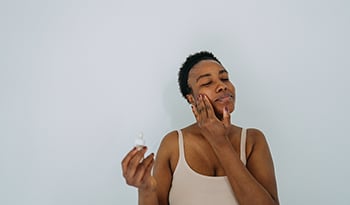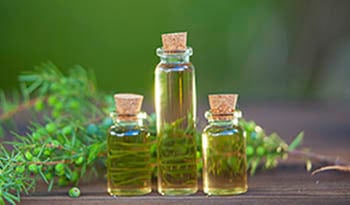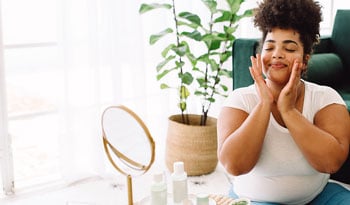Malassezia Overgrowth Could Be The Cause Of Your Skin Condition
DISCLAIMER:This blog does not intend to provide diagnosis...
- In this article:
- What Is Malassezia?
- Seborrheic Dermatitis
- Tinea Versicolor
- Pityrosporum Folliculitis (Fungal Acne)
- Treatments For Malassezia Overgrowth
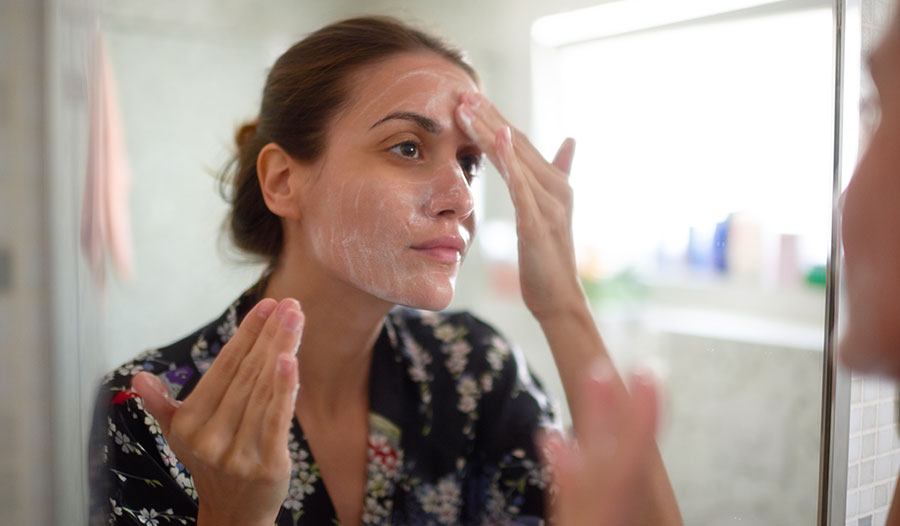
Mala-whaat?
What Is Malassezia?
Malassezia is a type of yeast that lives on all of us, on our skin. The Malassezia yeasts like to live in hair follicles, which are rich in sebum (oils). These yeasts are normal inhabitants of our skin, so it’s nothing to be embarrassed about or grossed out by. However, if there’s an overgrowth or a reaction to Malassezia, it can cause a range of different skin problems.
I would estimate that a large number of skin conditions I see and treat in my practice can be attributed to yeast overgrowth in some way. They are extremely common!
Yeast thrives especially well in warm, moist environments, so skin conditions caused by yeast overgrowth tend to be more common in the summer months, in hot humid climates, and in people who sweat excessively or produce more oils. Antibiotic use, immunosuppressive medications, and clothing and skincare products that are occlusive—or don’t “breathe”—can also contribute to yeast overgrowth.
The most common skin conditions that can be attributed to Malassezia yeast are seborrheic dermatitis, tinea versicolor, and fungal acne (pityrosporum folliculitis). Below, I’ll tell you what you need to know about each condition, and at the end of the article, I’ll go over my favorite ingredients and products for treating fungal skin conditions.
Seborrheic Dermatitis
Seborrheic dermatitis is basically a fancy medical term for dandruff. It refers to the yellow, greasy, flaky scale and sometimes redness that can occur on the scalp, in the ears, between the eyebrows, around the nose, and along the chest. It is extremely common. I see it more often in males, patients with neurologic conditions (dementia, Parkinson’s), and people who cannot or do not wash their hair frequently enough. The exact cause is unknown, but one of the main triggers is thought to be an overgrowth of Malassezia yeast, or the body’s abnormal exaggerated response to it. If seborrheic dermatitis is left untreated, sometimes it can become itchy, burn, or just be annoying because of the scale that is visible on the skin and clothing.
One of the key components in treating seborrheic dermatitis is to make sure that you massage shampoo directly on the scalp to manually help remove the dead skin and oils. For people who do not wash their hair very often, I also usually recommend washing more frequently.
Tinea Versicolor
Tinea versicolor is another common skin condition. It presents with slightly scaly patches of off-colored skin, primarily on the chest, abdomen, and back. The term “versicolor” in its name refers to how it may look like different colors in different people. The patches of skin can be hypopigmented (lighter whitish color), pink, or hyperpigmented (darker tan/brown color). Tinea versicolor is more common in summer months, when the climate is warm and people tend to sweat more. Also, because the sun stimulates the skin to make more pigment, the rash is often more noticeable in the summer. Therefore, staying protected from the sun can help improve the appearance of the rash. When using sun protection, make sure to use a lightweight sunscreen that isn’t too greasy, and loose-fitting lightweight clothing; occlusive sunscreens and clothing could potentially worsen tinea versicolor.
Pityrosporum Folliculitis (Fungal Acne)
To be honest, dermatologists cringe a little when they hear the popular social media term “fungal acne.” That’s because “fungal acne” is not really acne, it is instead a form of folliculitis, or inflammation of the hair follicle. Folliculitis can be caused by a variety of different organisms such as bacteria, viruses, or yeast. On the other hand, folliculitis may also be sterile, meaning it is not caused by an organism. In these cases, it may be due to medications, friction, or thick coarse hairs.
When folliculitis is caused by Malassezia, we call it pityrosporum folliculitis (aka fungal acne). It presents as multiple, small, itchy bumps and pimples, usually on the upper back and chest. It can also occur along the forehead/hairline, chin, neck, and upper arms. The key distinguishing characteristics between “fungal acne” and true acne are that fungal acne is monomorphic (meaning all of the pimples and bumps are the same size and shape) and there are no blackheads or whiteheads. Sometimes a skin biopsy or a culture of the pimple is needed to diagnose the yeast.
Treatments For Malassezia Overgrowth
Because all of these conditions are caused by the same underlying organism (yeast), the treatments are similar and should be targeted at decreasing the yeast.
In the dermatology office, the most common prescription medications we use to treat fungal skin conditions include creams, shampoos, or oral antifungal pills such as ketoconazole or fluconazole.
Alternatively, there are several over-the-counter preparations that work great as well. The best products to target yeast contain ingredients such as zinc pyrithione or selenium sulfide. These can be incorporated into your normal routine and alternated with other products, or they can be swapped in to completely replace other products. To maximize how well the products work, allow them to sit on the skin for 10 minutes before rinsing them off.
Another ingredient you may hear about is tea tree oil. Tea tree oil has been demonstrated to have antimicrobial activity and can be beneficial for treating yeast-related conditions. The one thing you have to be careful about with tea tree oil is that it can cause irritant or allergic contact dermatitis in some people. If you would like to try a tea tree oil product, I would test it for a couple weeks on a patch of skin on the inner arm first, to see how you tolerate it. Avoid products with olive oil, as this is like a food for yeast and can make these skin conditions worse!
Here are some of my favorite products:
Dove, Dermacare, Scalp, Anti-Dandruff Shampoo, Coconut & Hydration
Bosley, Scalp Relief Anti-Dandruff Shampoo with Pyrithione Zinc
Petal Fresh, Hair ResQ, Thickening Conditioner, Anti Dandruff
Herban Cowboy, Milled Soap, Sport
Vanicream, Z-Bar, Seborrheic Dermatitis & Anti-Dandruff Medicated Cleansing Bar
Selsun Blue, Antidandruff Shampoo, Itchy Dry Scalp
Giovanni, Tea Tree Triple Treat, Invigorating Shampoo
Note: This blog is not intended to provide diagnosis, treatment, or medical advice. Content provided on this blog is for informational purposes only. Please consult with a physician or other healthcare professional regarding any medical or health-related diagnosis or treatment options. Information on this blog should not be considered as a substitute for advice from a healthcare professional. The claims made about specific products throughout this blog are not approved to diagnose, treat, cure, or prevent disease.

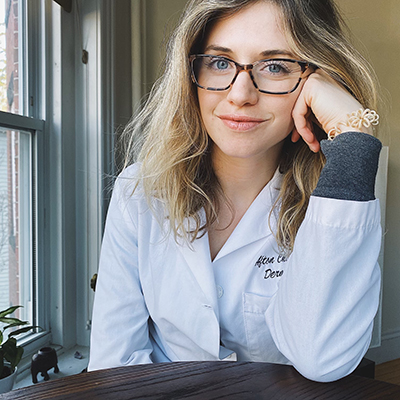 By Dr. Afton (Chavez) Cobb M.D., F.A.A.D.
By Dr. Afton (Chavez) Cobb M.D., F.A.A.D.
